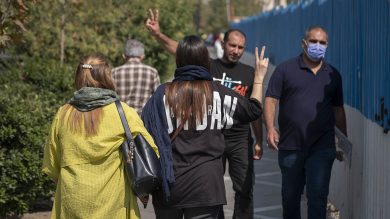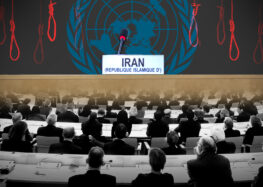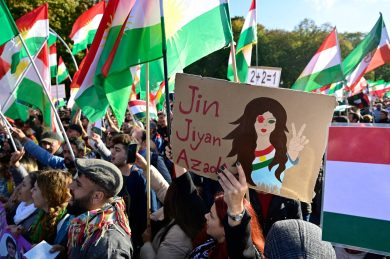In today’s Iran, where state surveillance, censorship, and repression stifle freedom of speech and political dissent, a new battleground has emerged: the digital realm. At the forefront of this virtual resistance are Iranian women, using social media platforms as tools of protest, empowerment, and survival. With streets under military watch and public dissent often ending in arrest or worse, the internet has become both a sanctuary and a stage for fearless voices.
Social media has turned into the megaphone of Iran’s women-led revolution. Through hashtags, videos, stories, and viral campaigns, Iranian women expose the brutality of the regime, especially the actions of the Islamic Revolutionary Guard Corps (IRGC) and the morality police. From documenting protests to challenging forced hijab laws, women across the country—and in exile—are rewriting the narrative in real time.
This article explores how Iranian women leverage digital tools to challenge oppression, coordinate resistance, and bring the world’s attention to their struggle for freedom.
1. Social Media as a Weapon of Resistance
Turning Phones Into Protest Tools
In Iran, a smartphone is more than just a communication device—it’s a weapon against authoritarianism. Women use their phones to:
• Record violent crackdowns by security forces
• Broadcast live protests
• Share stories of harassment and abuse
• Expose the regime’s lies and propaganda
Platforms like Instagram, Twitter/X, Telegram, and WhatsApp have become the frontline of the resistance, especially during nationwide protests, such as those sparked by the killing of Mahsa Amini in 2022.
Going Viral Despite Censorship
Despite constant efforts by the regime to shut down the internet, block platforms, and arrest digital activists, the creativity and resilience of Iranian women prevail. They:
• Use VPNs and proxy servers to bypass censorship
• Collaborate with tech-savvy activists abroad
• Archive content outside the country before accounts are deleted
• Leverage international hashtags to amplify their voices
2. Digital Campaigns that Shook the Regime
#MahsaAmini and the Birth of a Movement
The hashtag #MahsaAmini, used after her death in custody for allegedly wearing “improper hijab,” sparked a digital revolution. Women across Iran shared images of themselves removing or burning their hijabs. The hashtag trended globally, bringing unprecedented visibility to Iran’s internal resistance.
It marked a turning point: women were no longer anonymous victims—they were the leaders of a global movement.
#WomenLifeFreedom: A Rallying Cry
The slogan “Zan, Zendegi, Azadi” (Women, Life, Freedom) transcended borders, becoming a global feminist rallying cry. Women-led protests from Tehran to Toronto echoed this message, fueled by viral social media content showing the bravery of Iranian women confronting armed forces.
#MyStealthyFreedom and Digital Defiance
Started by Masih Alinejad, an Iranian journalist in exile, #MyStealthyFreedom encouraged women to post hijab-free photos. This campaign helped normalize resistance to compulsory hijab laws, and demonstrated how digital platforms could dismantle fear.
3. The IRGC’s Cyber Crackdown
Surveillance and Arrests
The IRGC treats digital resistance as warfare. Their Cyber Intelligence Unit constantly:
• Tracks users who post anti-regime content
• Hacks accounts of activists
• Uses facial recognition to identify protestors
• Arrests people for likes, comments, or retweets
Hundreds of women have been interrogated, imprisoned, or even disappeared for their online activism.
Fake News and Misinformation
The regime also floods social media with:
• Fake accounts to spread misinformation
• Pro-government propaganda
• Digitally altered videos to discredit protestors
This cyber warfare is meant to confuse the public, intimidate activists, and regain control over the digital narrative.
4. Women in Exile: Amplifying the Voice of Resistance
Masih Alinejad: The Face of Online Resistance
Living in exile, Masih Alinejad has become a digital powerhouse. Her social media accounts:
• Share real-time updates from inside Iran
• Provide security tips to protesters
• Feature interviews with victims of state violence
The IRGC plotted to kidnap and assassinate her, showing how threatening they find her digital influence.
Iranian Diaspora and Global Echo
Iranian women outside the country:
• Translate and share posts to international audiences
• Organize online campaigns and fundraisers
• Pressure international organizations through coordinated digital actions
The diaspora’s digital voice strengthens those resisting inside Iran, bridging the gap between the streets of Tehran and the screens of the world.
5. Challenges in the Digital Battle
Internet Blackouts
One of the regime’s most effective tactics is cutting off internet access. During protests, access is:
• Slowed down deliberately (throttling)
• Completely shut off in targeted areas
• Replaced with national intranet
This isolates activists, cuts them off from the world, and prevents evidence of state violence from being shared.
Digital Burnout and Trauma
Many women suffer from:
• Emotional fatigue from documenting trauma
• Fear of arrest or reprisals against family
• Psychological pressure due to surveillance
Still, they continue, because digital resistance is their only remaining space to be free.
6. How the World Can Support Iranian Women Online
1. Share and Amplify
• Retweet their content
• Use their hashtags
• Give credit to original voices
This ensures Iranian women are not speaking into a void.
2. Demand Tech Accountability
• Ask companies like Meta, Twitter, and Google to:
• Stop content takedowns that silence Iranian voices
• Provide emergency access to banned tools
• Strengthen account security for at-risk users
3. Support Secure Tech
• Fund and promote VPNs, encrypted messengers, and satellite internet
• Help Iranians bypass censorship and surveillance
4. Listen to Iranian Women
Instead of speaking for them, elevate their voices. Platforms, NGOs, and media must give space to those directly affected by the regime’s oppression.
7. The Future of Iran’s Digital Revolution
Iranian women have turned their phones into frontline weapons against dictatorship. While the regime controls streets and prisons, it struggles to control cyberspace. Every post, tweet, or video becomes a brick in the wall of resistance—seen by millions, impossible to erase.
This digital fight is not just about Iran; it’s about freedom, truth, and the power of women’s voices in the 21st century.
Conclusion
In the face of brutal repression, Iranian women have not gone silent—they’ve gone online. Their resistance on social media has:
• Exposed IRGC brutality
• Mobilized international support
• Redefined global feminism
From smartphones in hidden bedrooms to viral hashtags shaking global headlines, they’ve created a movement the regime cannot stop. The digital battlefront is fierce—but Iranian women are fiercer.
Join Our Newsletter!
Stay informed with the latest updates, news, and ways to take action in the fight for justice and global security. Sign up now to get updates delivered straight to your inbox!




